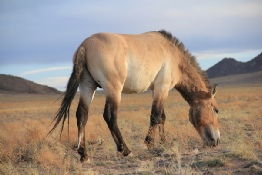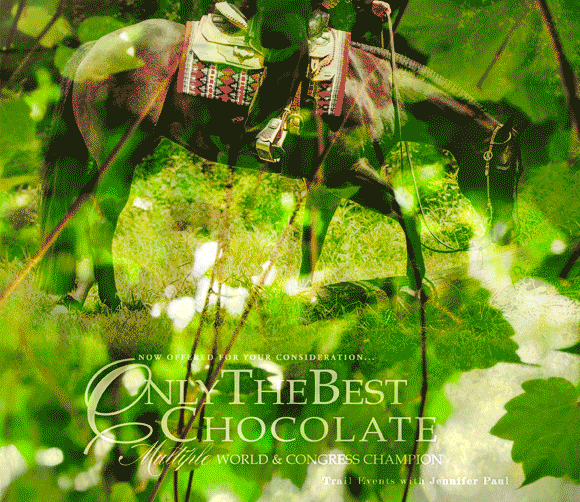New Study Challenges the Origins of the Horse
 Equine Science Update by: Mark Andrews
Equine Science Update by: Mark Andrews
A new study has challenged the current understanding of the origins of modern horses.
It had been thought that modern horses descended from those animals first domesticated by people of the Botai culture about 5,000 years ago, and that Przewalski’s horses represent the only remaining population of original wild horses. Now, research by an international team, led by Professor Ludovic Orlando, suggests this may not be so.
Orlando’s research team embarked on sequencing the genomes of Botai horses, aiming to characterize the genome sequence of the ancestors to all modern domesticates.
“Horse breeders have considerably transformed the horse during history, especially during the last few centuries with the development of intensive selective breeding. It is thus almost impossible to reconstruct early stages of horse domestication by looking at the genome of modern horses,” says Ludovic Orlando, Professor of Molecular Archaeology at the University of Copenhagen, Denmark and Research Director at the CNRS, University of Toulouse, France.
The analysis of the genome data, however, revealed an extraordinary finding. Rather than being the source of modern domesticates, the Botai horses appeared to be the direct ancestors of another group of horses that lived in Kazakhstan some 5,000 years ago and of… Przewalski’s horses! It looks like the latter, which were taken to be the last wild horses on the planet since their first discovery in the 19th century, are instead the feral descendants of the first horses ever domesticated.
“Our findings literally turn current population models of horse origins upside-down: what we used to understand as the last wild horse on earth is in fact the descendant of the earliest domestic horses, which simply escaped human pressure and became feral during the last few millennia,” adds Prof Orlando.
The study takes advantage of the extensive genome dataset produced to identify the genomic changes underlying this feralization process. One such changes affects a variant of the TRPM1 gene involved in leopard spotting, which used to be present amongst Botai horses but was eliminated from the Przwewalski’s horse gene pool. As such a variant is also associated with color night blindness, it is likely that it could only be artificially maintained by human herders but was rapidly lost by natural selection after the horse turned feral.
“Ironically, we used to think that the endangered population of Przewalski’s horses should be preserved as the last wild horses in the planet. We now find that they must be preserved as the closest descent of the earliest domestic horses,” says Charleen Gaunitz, one of the two PhD students in the Orlando team, who carried out the experimental work for the study.
The study also reveals that Botai horses are not the ancestors of modern domestic horses. Instead, their origin must be sought in other ancient populations.
“With the genome data that we currently have, it is impossible to locate the source that gave rise to the modern horse,” says Orlando. What is clear though, he explains, is that none of the ancient Eurasian horses that the team has analyzed so far within the last about 4,100 years relates to Botai. Patterns of mitochondrial DNA variation also indicate that the horse population expanded drastically between about 4,100 and 5,000 years ago. It thus looks like humans somehow encountered and developed a new type of horses at that time, and that this horse became extremely popular and perhaps even facilitated the expansion of human populations.
“We are looking at a series of candidate places that are known sources of major human expansions in the third millennium BCE,” says Orlando. Interestingly, the earliest fossils presently sequenced of this new horse type come from Hungary, Romania and the Pontic Caspian steppe. The team now thus does not dismiss a possible origin outside Central Asia.
“This work clearly illustrates the power of harnessing ancient genome sequencing. It really allows us to discover a series of key evolutionary processes that have left little signature in the genomes of living populations,” says Antoine Fages, the second PhD student in the Orlando team, who carried out the experimental work for the study.
“Ancient genomics just rejected Botai as the ancestors of modern domesticates. We are confident that ancient genomics will soon help identify the tempo and locus of horse domestication,” concludes Professor Orlando.
For more details, see:
Ancient genomes revisit the ancestry of domestic and Przewalski’s horses
Charleen Gaunitz, Antoine Fages and others
Science (2018) eaao3297
DOI: 10.1126/science.aao3297











